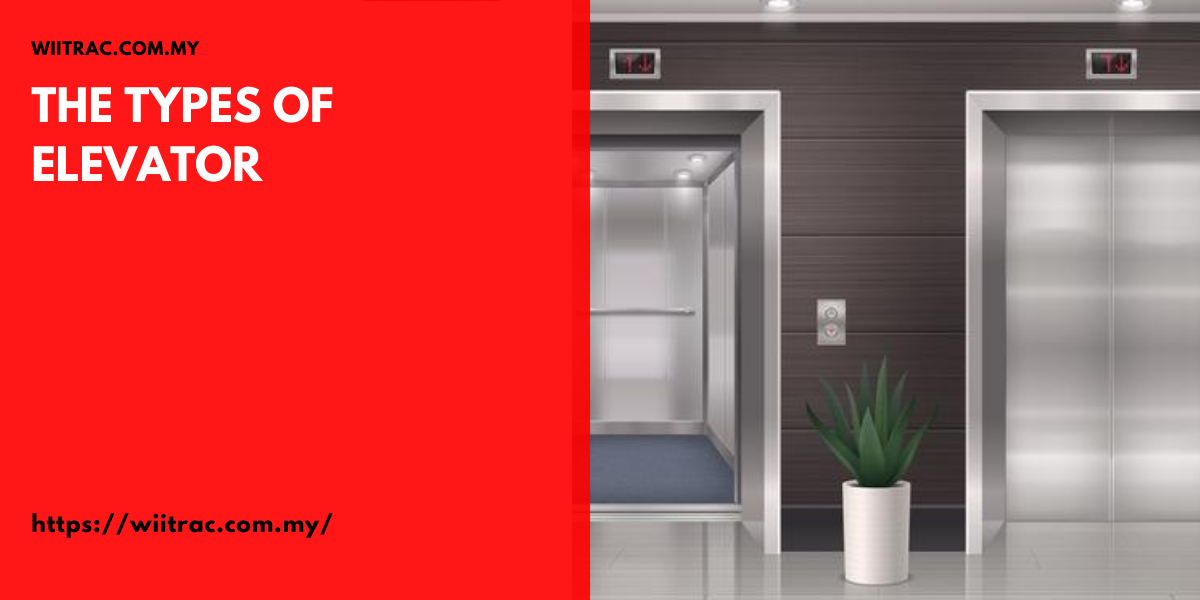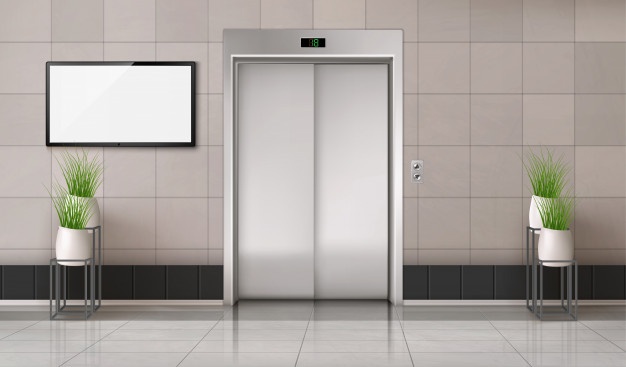There are three types of elevators that are typically used: traction with a machine room, traction without a machine room, and hydraulic; however, each type has variants.
- MRL (Machine-Room-Less) Elevators
Machine-Room-Less Elevators are traction elevators without a separate machine room above the elevator shaft. When maintenance or repairs are necessary, the machine is located in the override area and is reached from the top of the elevator cab. The control boxes are housed in a control room adjacent to the elevator shaft on the tallest landing, approximately 150 feet away from the machine.
Elevators with no machine rooms have a maximum travel distance of up to 250 feet and can move at rates of up to 500 feet per minute. In terms of startup and maintenance expenses, MRL elevators are equivalent to geared traction elevators, however they consume less energy than geared elevators.
Elevators with no machine rooms are becoming the most preferred alternative for mid-rise structures with trip distances of up to 250 feet. They use less energy, take up less space, and have the same operation and dependability as gearless traction elevators.
The major reason that MRL elevators have been adopted so slowly in the United States is because the building rules prohibited the motor from being within the hoistway. This is changing, but it is still a good idea to check with local codes before selecting an MRL elevator.
- Hydraulic Elevators
A piston at the bottom of the elevator pulls the elevator up while an electric motor pumps oil or another hydraulic fluid into the piston. As a valve releases the fluid from the piston, the elevator falls. They have a maximum speed of 200 feet per minute and are ideal for low-rise applications of 2-8 storeys. The hydraulic elevator machine room is placed on the lowest floor, close to the elevator shaft.
Conventional hydraulic elevators feature a sheave that extends below the elevator pit’s floor and receives the retraction piston as the elevator lowers. Some designs have a telescopic piston that collapses, necessitating a shallower hole under the pit. The maximum travel distance is around 60 feet.
Hole-less Hydraulic Elevators are equipped with a piston on either side of the cab. The telescoping pistons in this design are fixed at the pit’s base and do not require a sheave or a hole below the pit. Telescoping pistons have a travel distance of up to 50 feet. Non-telescoping pistons have a maximum travel distance of roughly 20 feet.
Roped Hydraulic Elevators are propelled by a combination of ropes and a piston. The maximum travel distance is around 60 feet.
Hydraulic elevators offer a cheaper starting cost and lower continuing maintenance expenses than other elevator types. Hydraulic elevators, on the other hand, consume more energy than other types of elevators since the electric motor works against gravity to drive hydraulic fluid into the piston. One significant disadvantage of hydraulic elevators is that the hydraulic fluid can occasionally leak, posing a considerable environmental threat. Hydraulic elevators are not being erected as often as they once were due to environmental concerns and excessive energy consumption.
- Traction Elevators with Geared and Gearless Traction, as well as a Machine Room
Traction elevators are propelled by ropes that travel across a wheel connected to an electric motor located above the elevator shaft. They are employed in mid- and high-rise buildings and have substantially faster travel rates than hydraulic elevators. A counter weight improves elevator efficiency by countering the weight of the automobile and people, reducing the amount of weight that the motor must move.
Traction using Gears Elevators feature a gearbox connected to the motor that powers the wheel that moves the ropes. Geared traction elevators may travel at rates of up to 500 feet per minute. A geared traction elevator has a maximum travel distance of around 250 feet.
Gear-less Traction Elevators feature a wheel that is directly connected to the motor. Gear-less traction elevators may reach speeds of up to 2,000 feet per minute and have a maximum travel distance of about 2,000 feet, making them the sole choice for high-rise applications.
Geared traction elevators are in the centre of the price spectrum in terms of original investment, continuing maintenance, and energy usage. Gear-less traction elevators have a higher initial cost, a lower continuing maintenance cost, and use energy somewhat more effectively than geared traction elevators.
It is critical to inspect traction elevator ropes and sheaves for wear on a regular basis. As they wear, the traction between the sheave and the cables decreases and slippage increases, reducing efficiency and becoming hazardous if left unchecked.
Height constraints on traction elevators are determined by the length and weight of the cables or ropes. Unprecedented materials, such as carbon fibre, that are stronger and lighter, will allow traction elevators to reach new heights.
For more information about Home Elevator Malaysia, please visit https://wiitrac.com.my/









